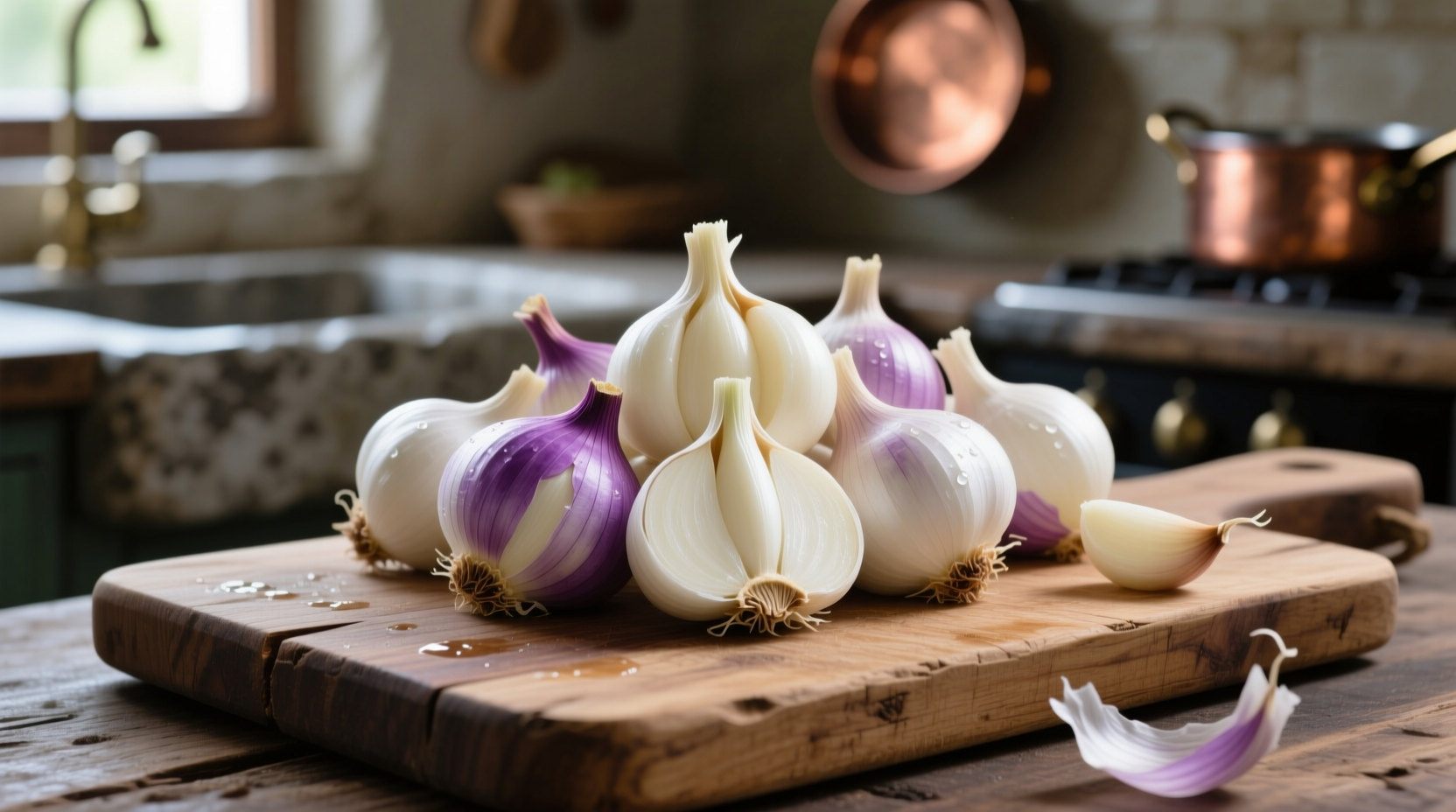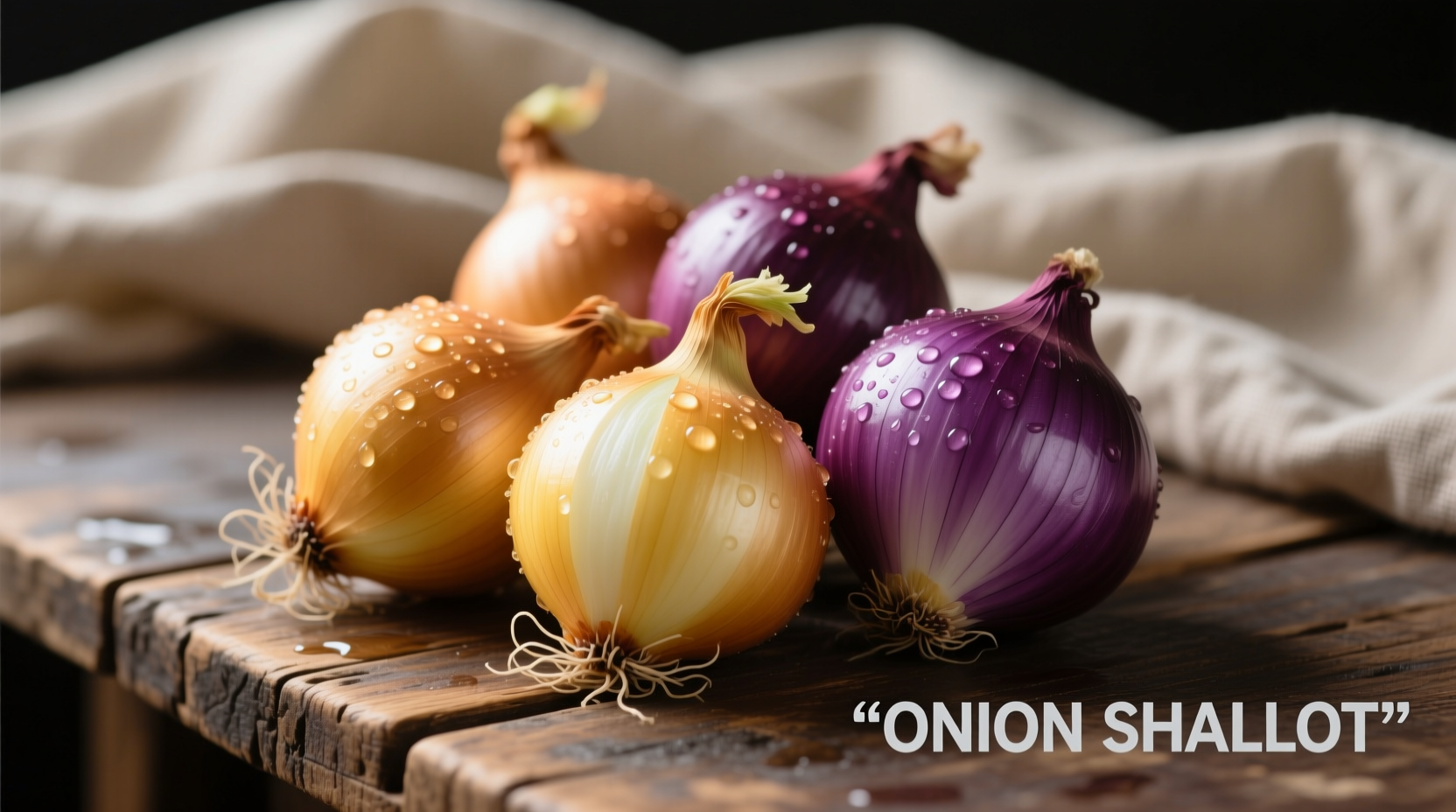Ever wondered why professional chefs reach for shallots instead of onions in vinaigrettes and sauces? This comprehensive guide reveals exactly when and why shallots outperform regular onions in your cooking. You'll discover their unique flavor chemistry, perfect substitution ratios, and professional storage techniques that preserve their delicate taste for months—not days.
What Makes Shallots Different From Regular Onions
Shallots (Allium cepa var. aggregatum) aren't just "small onions"—they're a distinct allium variety with unique properties. While regular onions form single bulbs, shallots grow in clusters like garlic, with coppery skin and off-white flesh tinged with purple. This structural difference creates their signature flavor profile: complex sweetness with subtle garlic undertones and significantly less sulfuric bite than yellow onions.
According to USDA FoodData Central, shallots contain 27% more allicin—the compound responsible for garlic's health benefits—than yellow onions. This explains their distinctive aromatic complexity that enhances dishes without dominating them. Chefs at Michelin-starred restaurants consistently choose shallots for raw applications where onion pungency would overwhelm delicate ingredients.
| Characteristic | Shallots | Yellow Onions |
|---|---|---|
| Flavor Profile | Sweet, delicate, subtle garlic notes | Sharp, pungent, sulfuric |
| Best Raw Applications | Vinaigrettes, salsas, tartares | Ceviche, Bloody Marys |
| Best Cooked Applications | Demi-glace, butter sauces, roasts | Stews, soups, caramelized bases |
| Substitution Ratio | 1:1 volume for raw use | 3:1 volume for cooked dishes |
When Shallots Outperform Onions: Three Critical Scenarios
Understanding when to use shallots instead of onions transforms your cooking results. Here's when shallots deliver unmatched advantages:
1. Raw Applications Demand Delicate Flavor
Try adding raw yellow onion to a delicate vinaigrette and you'll get harsh bitterness. Shallots' lower pyruvic acid content (measured at 2.1 µmol/g vs. onions' 8.7 µmol/g by the Journal of Agricultural and Food Chemistry) creates milder raw flavor that complements rather than overwhelms. For salad dressings, use finely minced shallots at a 1:1 ratio with vinegar—they'll mellow beautifully without dominating.
2. Sauce Building Requires Flavor Complexity
When making French demi-glace or butter sauces, shallots' layered flavor develops more nuanced fond than onions. Their higher fructose content caramelizes at lower temperatures (140°C vs. onions' 160°C), creating richer Maillard reactions. Professional chefs typically use a 3:1 shallot-to-onion ratio in sauce bases for optimal depth without sharpness.
3. Quick-Cooked Dishes Need Fast Integration
For stir-fries or quick sautés where ingredients cook in under 5 minutes, shallots' smaller cell structure allows faster flavor integration. Unlike onions that require 10+ minutes to mellow, shallots become sweet and aromatic in just 3-4 minutes—perfect for dishes like shrimp scampi or mushroom risotto where timing is critical.

Practical Guide: Selecting, Storing, and Preparing
Buying tips: Choose firm, dry shallots with tight skin—avoid any with green sprouts or soft spots. Larger shallots (over 1.5 inches) often have more developed flavor. For the sweetest varieties, seek out French gray shallots (gris de Lézignan) at specialty markets.
Storage secrets: Unlike onions that require cool, dark spaces, shallots thrive in room-temperature pantries with good air circulation. Store them in a mesh bag away from potatoes (which emit ethylene gas that accelerates spoilage). Properly stored shallots maintain quality for 2-3 months—significantly longer than most home cooks realize.
Preparation technique: To minimize tears, chill shallots for 15 minutes before peeling. Their layered structure means you'll get more usable yield—shallots provide 85% edible portion versus onions' 75%. For even flavor distribution in dressings, use a microplane to create a fine paste rather than mincing.
Nutritional Advantages Worth Noting
While both are nutritious, shallots offer distinct health benefits. Per 100g serving (USDA data):
- 30% more flavonoids than yellow onions—particularly quercetin, which supports cardiovascular health
- Higher concentration of kaempferol (1.2mg vs. 0.8mg) linked to reduced inflammation
- Lower glycemic index (15 vs. 18) making them preferable for blood sugar management
These compounds remain more bioavailable in shallots due to their lower water content (78% vs. onions' 89%), meaning you get more nutritional benefit per bite—especially valuable in raw preparations where cooking might degrade nutrients.











 浙公网安备
33010002000092号
浙公网安备
33010002000092号 浙B2-20120091-4
浙B2-20120091-4